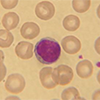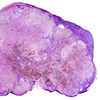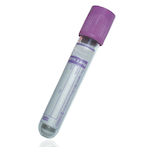Ammonia
Specimen Volume
1mL bloodSpecimen Transport
Transport sample immediately to laboratory. Sample should be received within 30 minutes of collection. If possible transport samples on ice.Sample Preparation
Turnaround Time
24 hoursSample Processing In Laboratory
Separate sample immediately on receipt as ammonia concentration can increase significantly during 30 minutes. Do not reject samples not received within 30 minutes. Please book in and pass sample to automation highlighting when sample was receivedSample Stability
Store frozen if analysis cannot proceed immediatelyGeneral Information
Increased concentrations of ammonia (>350 umol/L) are found in patients who are unable to metabolise ammonia because they have an absence or reduced activity of one or more of the enzymes of the urea cycle. These are classified generically as inborn errors of metabolism. Measurement of ammonia in plasma is important in the diagnosis of these conditions and in monitoring treatment, which is often by dietary protein restriction but also with specific drugs and/or intermediaries of normal metabolism. In severe cases, liver transplantation may be necessary. Increased plasma ammonia is also part of the diagnosis and monitoring of patients with the inherited organic acid disorders, inborn errors of both branched chain amino acids and propionyl-CoA metabolism.
Perinatal asphyxia and any severe illness in neonates can produce values of 170-200 umol/L.
Patient Preparation
Special care should be taken in cleaning the venepuncture site.
A free-flowing venous blood sample should be collected into EDTA tube. Drawing blood through a small indwelling catheter can cause haemolysis and hence falsely high ammonia. Smoking should be avoided prior to sample collection.
Notes
It is recommended that any high ammonia values are confirmed using fresh venous blood, collected onto ice and received within the lab within 30 minutes of collection.
Discrepancies between capillary and venous samples can occur, venous blood is the preferred specimen.
No significant interference from icterus or lipaemia. The concentration of ammonia is significantly increased by haemolysis
Reference Range
18 - 72 umol/L
Source of Reference Range
Abbott DiagnosticsSpecifications
- EQA Status: WEQAS Ammonia Scheme
- EQAS Scheme: Yes








